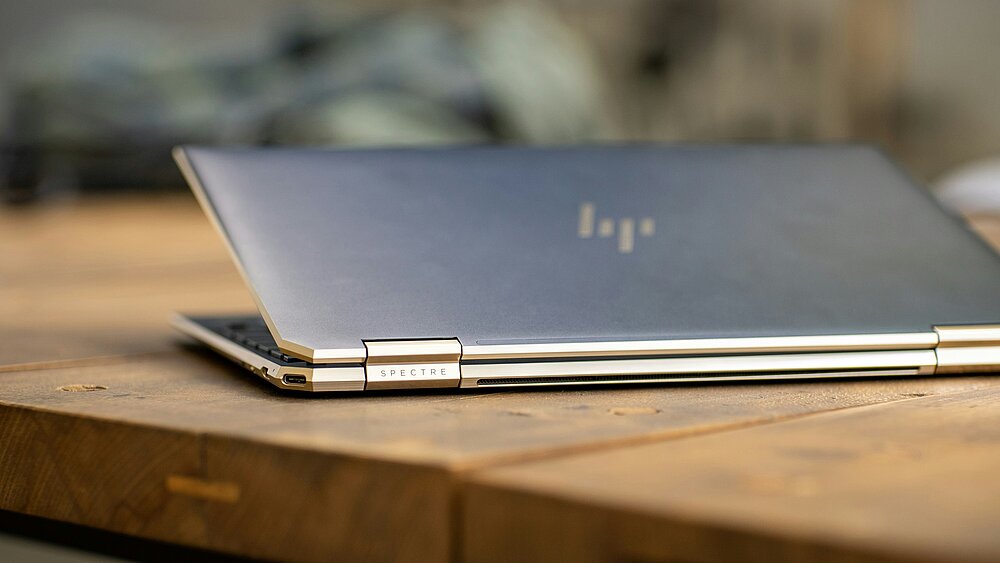Find out today what the legal world will be talking about tomorrow.
05.02.2024
Paradigm shift in the burden of proof in parallel trade: ECJ, judgment of 18 January 2024 - C-367/21, Hewlett Packard Development Company LP ./. Senetic S.A.

The year begins with a bang in ECJ case law on trademarks: With the decision "Hewlett Packard Development Company LP ./. Senetic S.A." of 18 January 2024 (C-367/21), the highest European court relieves parallel traders of a fundamental burden of proof regarding the so-called exhaustion of trademark rights: In future, the parallel trader will often no longer have to prove that the specific goods were placed on the market in the European Economic Area (EEA) by the trademark owner or with his consent and may therefore also be traded outside selective distribution systems without infringing the trademark. Instead, it will primarily be the trademark proprietor who will have to prove that the goods are not exhausted.
1. Starting point: The exhaustion of rights in trademark law and its significance for the European Single Market (ESM)
Companies can use protected trademarks to prevent other companies from bringing identical or similar goods or services onto the market under the same or a similar sign, thus creating a risk of confusion. Trademark law is therefore primarily a protection against imitations, counterfeiting and the confusingly similar labeling of comparable products by third parties.
However, trademarks should not enable a trademark owner to seal off national markets within the European single market and thus maintain price differences between the member states. Furthermore, trademark owners should not be able to completely control all subsequent distribution channels for their products via trademark law and thus prevent price competition. This is why there is the so-called "exhaustion" of trademark rights: If specific branded goods have been sold by the trademark owner or with their consent (e.g. by affiliated companies, licensors or distributors), the trademark owner cannot prohibit downstream dealers who trade with these products in the single market from using the trademark on the specific products and when advertising them, even if they are not authorized dealers of the trademark owner, i.e. if they do not belong to the selective distribution system. Exhaustion is regulated in EU trademark law in Article 15 of the EU Trademark Regulation (EUTMR) and in German trademark law in Section 24 of the Trademark Act (MarkenG).
Accordingly, the principle of exhaustion enables a kind of automatic harmonization of prices in the member states via so-called parallel trade: If, for example, a branded perfume is sold in the trademark owner's selective distribution system in Italy for EUR 50, but in Germany for EUR 80, trading companies outside the selective distribution system (parallel traders) can buy the goods in Italy at a low price from the distribution system - e.g. by buying up surplus goods from authorized dealers - and still sell them in Germany below the German market price even after adding a trade margin. In this way, for example, branded perfumes legally reach drugstores as promotional goods, even though they are not authorized dealers of the perfume manufacturers. Via the market mechanism of price competition, this leads to price harmonization in the member states in the medium to long term.
To sum it up, the principle of exhaustion of trademark rights in the single market exists so that trademark owners cannot misuse their trademark to foreclose the market and artificially maintain price differences in the single market. In this respect, the possibility of parallel trade in branded goods in the single market is intended by the EU legislator as a legal policy.
2. The (previous) problem: burden of proof in infringement disputes
Until now, however, there has been a very significant practical problem: the burden of proof in infringement proceedings.
If a parallel trader offered branded goods that were sold by the trademark owner via a selective distribution system, it was previously sufficient for the trademark owner to simply claim that the goods were not exhausted. In the infringement proceedings, the parallel trader then had to prove, based on this mere assertion, that the specific goods were originally placed on the market in the EEA by the trademark proprietor or with its consent.
However, it is usually impossible for the parallel trader to provide such evidence - even if he is legally trading in original EEA goods:
If he obtains his goods directly from an authorized dealer of the trademark owner in the EEA, he could prove exhaustion by naming the dealer and presenting the trade documents - but at the same time he would close his source of goods, because the authorized dealers are almost always prohibited from reselling to commercial buyers by the trademark owner in the dealer agreements and the trademark owner will immediately close the "leak" in his distribution system after becoming aware of it due to the evidence provided by the parallel dealer. The result would be a Pyrrhic victory: a successful proof with which the parallel dealer simultaneously deprives himself of his own business basis. For this reason, a parallel trader is often unable to provide such evidence, even in the case of genuine EEA goods, for reasons of his very existence alone.
If he purchases his goods from intermediaries who in turn have purchased the goods (directly or via further intermediaries) from authorized dealers in the EEA, the parallel trader must regularly rely on his supplier's assurance that the goods are exhausted and therefore marketable in the EEA. However, this assurance is not recognized as evidence of exhaustion in court, as it only proves an assertion by the upstream supplier and not actual exhaustion. The upstream supplier will also not tell the parallel trader where his goods come from: Firstly, the parallel trader could then skip the upstream supplier in the supply chain and purchase the goods in future (more cheaply) directly from its source. Secondly, it would - directly or indirectly – put the head of the authorized dealer from whom it purchases its goods on the block.
In practice, the result to date has often been that the parallel trader has been convicted of trademark infringement on the mere assertion that it had traded in non-exhausted branded goods. And not because he had traded in counterfeits or because the goods were not actually EEA goods. But simply because, due to the lack of evidence described above, he is in fact unable to prove that the original goods traded are exhausted goods. In the past, this has often meant that the parallel trader had to cease to offer all (!) stocks of the original goods that he carried and had to destroy them all because the court ruling that was then issued covered all branded goods for which the parallel trader could not prove exhaustion (which, as explained above, was not possible for him). This was irrespective of whether the goods in question were EEA goods or not, i.e. independent of the actual origin of the goods.
3. The judgment of the ECJ of 18 Januar 2024: Modification of the burden of proof under certain conditions
The European Court of Justice has now issued a decision in the case "Hewlett Packard Development Company LP ./. Senetic S.A." (C-367/21), in which it modifies the previous rules on the burden of proof and provides for a more balanced burden of proof overall. In particular, this takes into account the system-related lack of evidence of the legally acting parallel trader, without depriving the trademark owner of his rights.
a) What is the case about?
Hewlett Packard (HP) is the proprietor of, inter alia, the EU trademark (word mark) "HP" (No. 000052449) and the EU figurative trademark "HP" (No. 008579021). HP computer hardware is distributed by HP exclusively through authorized dealers in a selective distribution system. These authorized dealers may only purchase HP branded products from HP or other authorized dealers and may not sell them to commercial resellers outside the distribution system. Each HP item is provided with a serial number that allows this item to be clearly identified. At the same time, HP operates an IT tool and a database in which HP records which specific item is intended for which market (tracking code system). However, the intended market is not apparent to anyone other than HP because there are no external markings on the products indicating the intended market. The database is only accessible to HP and HP does not provide any information on the market determination of specific HP articles even upon request.
Senetic S.A. (Senetic) is a Polish company. It trades as a parallel trader in original HP goods, among other things, but is not itself an authorized HP dealer. Senetic claims to have purchased the goods from an upstream supplier based in the EEA, which is also not an authorized HP dealer, but has assured Senetic that the goods are marketable in the EEA. Senetic tried unsuccessfully to have the marketability confirmed by authorized HP representatives. Senetic has been sued by HP in Poland for infringement of HP trademarks by trading in (original) products bearing these trademarks. The parallel trader claims exhaustion of HP’s trademark rights.
b) The question asked by the referring Regional Court of Warsaw to the ECJ
The Regional Court in Warsaw, which dealt with the case, found that the lack of a marking of the products with the intended market makes it almost impossible for an independent trader such as Senetic to determine for each individual article whether it is intended for the EEA, let alone to provide proof of exhaustion. It therefore referred the question to the ECJ for a preliminary ruling as to whether it is in line with the fundamental freedoms of the single market (Article 34, 35 and 36 TFEU) and in particular the free movement of goods if the (ultimately impossible) burden of proof for exhaustion lies with the parallel trader even if
- the trademark owner operates a selective distribution system of the type described above,
- the branded goods do not bear any distinctive signs or other distinguishing features which would make it possible to identify the place where they were brought on the market by the trademark owner or with his consent,
- the parallel trader has acquired the branded goods in the EEA,
- the upstream supplier has confirmed the marketability of the branded goods in the EEA, and
- the trademark owner does not provide an IT tool, marking system or other means by which a potential buyer can independently verify that the goods are exhausted, and refuses to carry out such verification at the buyer's request.
c) The decision of the ECJ
According to the ECJ, the key question is whether, in circumstances such as those in the main proceedings, the burden of proof for exhaustion of the the trademark rights in question should fall exclusively on the defendant in infringement proceedings (para. 47 of the judgment).
To answer this question, the ECJ first discusses the need to balance the interests of the trademark owner on the one hand and the interests of the parallel traders and the fundamental freedoms of the single market on the other hand (para. 49 et seq. of the judgment). It notes that neither the EUTMR nor the Enforcement Directive (2004/48/EC) regulate the burden of proof for exhaustion (para. 56). With reference to the decision "Van Doren + Q" (ECJ, judgment of 8 April 2003 - C-244/00, para. 35-37), the court further states that the protection of the free movement of goods requires a modification of the (national) rules of burden of proof if these could enable the trademark owner to foreclose the national markets and thus maintain price differences between the Member States (para. 58 and 59).
On this basis, the ECJ then comes to its decisive conclusion: In the circumstances summarized in the question referred under b) above, it is so difficult or even impossible for a parallel trader to provide evidence for the exhaustion of rights that a modification of the burden of proof is necessary in order to protect the fundamental freedoms of the internal market. Otherwise, the allocation of the burden of proof could enable the trademark owner to counteract parallel imports of goods bearing that trademark, even though the restriction on the free movement of goods that would result would not be justified by the protection of the right conferred by that trademark (para. 63).
According to the ECJ, the result is a graduated burden of proof, at least if the conditions listed under b) above are met: In this situation, each court of the Member States must modify the allocation of the burden of proof for the exhaustion of rights conferred by the trademark concerned by placing on the owner of the trademark the burden of proof that the individual items of the goods in question were actually first put on the market by him (or with his consent) outside the territory of the EEA. Only if that proof is successful, it will be for the defendant in the infringement proceedings to provide evidence to the contrary, i.e. that these items were actually placed on the market in the EEA by the trademark owner or with his consent (para. 66).
To sum it up: It is no longer sufficient, at least under the circumstances described under b) above, for a trademark owner to merely claim that the (original) goods distributed by the parallel trader do not originate from the EEA. The trademark owner must now prove this fact. If he is unable to do so, e.g. because he does not have a - demonstrably error-free! - tracking code system for each individual item of its branded products, with which he can prove with legal certainty the place where these items were first placed on the market by the trademark owner or with his consent, exhaustion of rights for the items distributed by the parallel trader will be presumed as a result. The burden of proof for exhaustion, which previously originally fell on the parallel trader, now only falls on him if the trademark owner has first successfully proven a place of first marketing outside the EEA. Only then must the parallel trader prove that the goods are actually EEA goods.
4. The business impact of the ruling
The impact of the ruling on business should not be underestimated. Wherever selective distribution systems for branded products exist, legal parallel trading will become considerably easier. At the same time, it will be much more difficult for trademark owners to prevent the distribution of the parallel trader's entire current and future stock of branded goods through a successful infringement attack on just one or a few items that have (allegedly) been placed on the market outside the EEA because the parallel trader is unable to check the exhaustion of the individual products and will therefore be subject to the injunction for all branded products without distinction - even for those that are actually exhausted.
For trademark owners, this means that - if they want to prevent parallel trade with non-EEA goods - they should either mark their EEA goods as such or open their tracking code system for the query "EEA / non-EEA" for third-party traders. Otherwise, it will often be easy for parallel traders to meet the requirements for the presumption of exhaustion under the new ECJ ruling: This is because they would then only have to source the goods from an upstream supplier in the EEA and the latter would just have to confirm EEA marketability. The trademark proprietor would then fulfill all other requirements for the parallel trader by denying the possibility to verify the intended market of the goods.
However, the decision does not give parallel traders carte blanche to trade non-EEA goods in Europe in the future. In any case, with a properly functioning tracking code system and careful documentation of the trade route for each individual product item, a professionally organized trademark owner will often be able to use this system to prove the place of first marketing outside the EEA at least to the extent that the burden of proof shifts and the parallel trader must provide counter-evidence of exhaustion as a consequence - which he cannot do under any circumstances for non-EEA goods. This leads to a correct result, namely a conviction of the parallel trader for illegal parallel trade in the EEA with non-exhausted goods.
However, the ruling significantly strengthens the rights of those parallel traders who legally trade in EEA goods: In future, they will be able to request the trademark owner to confirm the marketability of the branded goods in turn, at least if they obtain them from upstream suppliers in the EEA and have them expressly confirm their marketability in the EEA. If the trademark owner fails or refuses to do so (and if the goods do not have any other identifying features that would allow them to be identified as EEA or non-EEA goods), the legally operating parallel trader can in future invoke the burden of proof modification from the ECJ's Hewlett Packard ruling in infringement proceedings. If the goods are indeed EEA goods, the trademark owner will generally not be able to prove a non-EEA origin. Here, too, the result is correct: legal parallel trade is no longer prevented just because the parallel trader is required to provide impossible proof of exhaustion.
It will be interesting to see how the national courts will implement the ECJ's decision.
Authors


